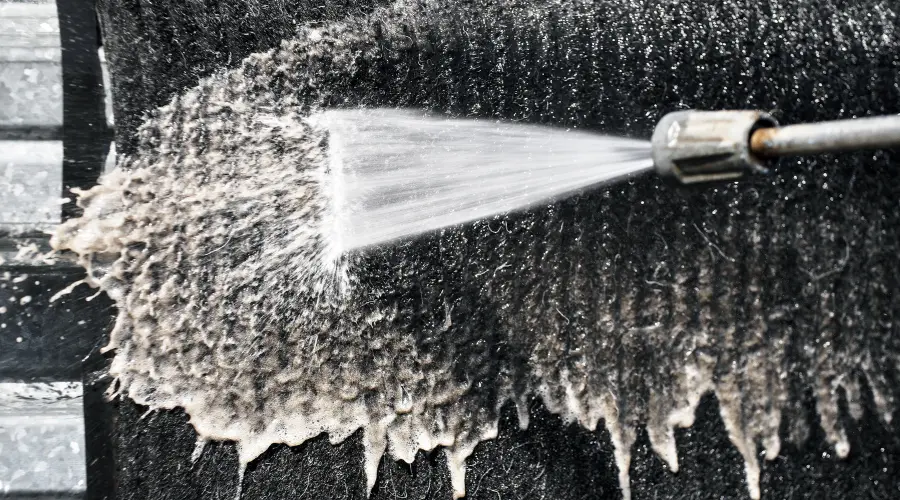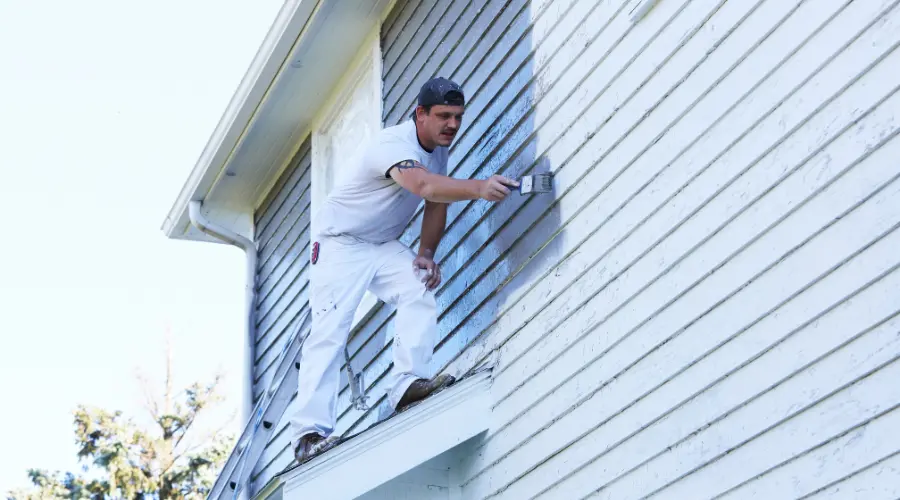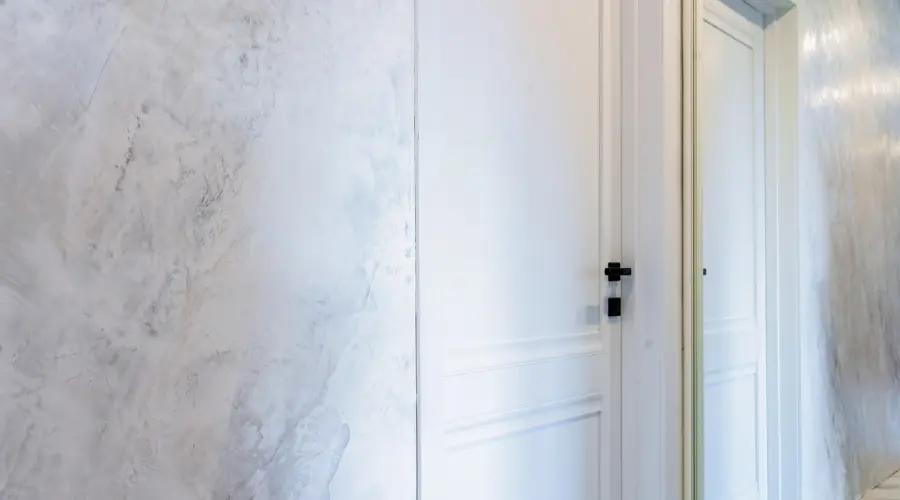When painting your home, understanding the differences between interior and exterior paint is essential. Whether enhancing your living room’s charm or shielding your home from the elements, choosing the right paint ensures durability, beauty, and safety.
Key Takeaways
- Interior Paint: Ideal for indoor surfaces, formulated for durability, low-VOC content, and aesthetic finishes like matte, eggshell, or gloss.
- Exterior Paint: Built for outdoor durability, weather resistance, UV protection, and protection against moisture, mold, and mildew.
- Avoid Cross-Usage: Exterior paint indoors can be harmful due to high VOC levels; interior paint outdoors lacks durability for harsh elements.
- Project-Specific Choices: Tailor paint selection to specific project needs for long-lasting and visually pleasing results.
Interior Paint: Features and Benefits
Interior paint is specifically crafted for the inside of your home. Designed to handle the rigors of daily life, it offers durability and aesthetic appeal.
- Durability: Interior paint is formulated to resist scuffs, stains, and repeated cleaning. This makes it ideal for high-traffic areas like hallways, kitchens, and children’s rooms.
- Aesthetic Options: Available in a variety of finishes—from matte to high-gloss—interior paint allows homeowners to achieve their desired look and feel. Matte finishes create a subtle, sophisticated appearance, while gloss finishes offer a vibrant, reflective surface.
- Low VOC Levels: Interior paints are designed with low levels of volatile organic compounds (VOCs), ensuring better indoor air quality. This minimizes health risks such as headaches and respiratory issues, especially during and after painting.
- Ease of Application: Interior paints often have smooth application properties, reducing drips and ensuring an even coat, making DIY projects more manageable.
Exterior Paint: Features and Benefits
Exterior paint is engineered to endure the challenges of the outdoors, providing protection and long-lasting beauty for your home’s exterior surfaces.
- Weather Resistance: Exterior paints are fortified with additives to resist harsh conditions like rain, snow, and extreme sunlight.
- UV Protection: These paints include UV-resistant properties that prevent fading and discoloration over time, ensuring vibrant colors.
- Moisture Defense: With additives to combat moisture, exterior paints prevent mold, mildew, and peeling, maintaining the integrity of the painted surface.
- Durability: High durability ensures the paint withstands physical wear and tear, such as abrasions or impacts, commonly experienced by outdoor surfaces.
- Versatile Finishes: Exterior paints come in flat, satin, and gloss finishes, catering to diverse architectural styles and preferences.
Why You Shouldn’t Use Exterior Paint Indoors
While it might seem practical to use exterior paint indoors for added durability, this approach has significant drawbacks:
- High VOC Content: Exterior paints contain higher levels of VOCs, necessary for weatherproofing but harmful to indoor air quality. Prolonged exposure can lead to health issues, including dizziness, nausea, and respiratory discomfort.
- Lingering Odor: Exterior paint’s stronger odor tends to persist longer, making indoor spaces unpleasant for extended periods.
- Incompatibility with Interior Aesthetics: The high sheen and texture of exterior paint may not align with the subtler, more refined aesthetics of indoor spaces.
- Safety Concerns: Chemicals in exterior paint may pose risks, especially for children or individuals with sensitivities.
Can You Use Interior Paint Outdoors?
Using interior paint outdoors is possible but comes with limitations. Interior paint lacks the robust features of exterior paint, such as UV resistance, moisture protection, and durability.
- When It’s Feasible: Interior paint can be used in sheltered outdoor spaces like covered porches or enclosed patios where exposure to harsh elements is minimal.
- Drawbacks: Over time, interior paint on exterior surfaces may peel, fade, or deteriorate due to insufficient protection against environmental factors.
- Recommendation: For outdoor projects, especially in areas exposed to weather, exterior paint remains the best choice for lasting results.
Choosing the Right Paint for Your Project
The key to a successful painting project lies in selecting the appropriate paint for the specific surface and environment. Here’s how to make informed decisions:
- Evaluate the Space: Determine whether the area is indoors or outdoors and assess its exposure to elements like sunlight, moisture, and wear.
- Consider Functionality: For high-traffic indoor areas, choose durable, washable interior paints. For exterior walls, prioritize weather resistance and UV protection.
- Match Aesthetics: Select finishes and colors that complement your home’s style, whether modern, rustic, or traditional.
- Consult Professionals: When in doubt, seek advice from experienced painters who can recommend the best products and techniques for your needs.
Frequently Asked Questions (FAQs)
Q: Can I mix interior and exterior paint?
A: Mixing interior and exterior paint is not recommended. Each type is formulated with specific properties for its intended environment, and combining them can compromise their performance.
Q: How long does exterior paint last?
A: Exterior paint typically lasts 5-10 years, depending on environmental conditions, quality of paint, and surface preparation.
Q: Is interior paint safe for children’s rooms?
A: Yes, many interior paints are available in low-VOC or zero-VOC formulations, making them safe for use in children’s rooms.
Q: What is the best finish for exterior paint?
A: Satin or semi-gloss finishes are popular for exterior surfaces due to their durability and ease of cleaning, while flat finishes work well for concealing imperfections.
Q: Can I repaint over old exterior paint?
A: Yes, but surface preparation is critical. Clean the surface thoroughly, repair any damage, and apply a primer if needed to ensure proper adhesion.
Q: Do I need to use a primer with interior paint?
A: Primer is often necessary for new, unpainted surfaces or when transitioning between drastically different colors. Some interior paints come with built-in primers for added convenience.
Conclusion
Understanding the distinct characteristics of interior and exterior paints is crucial for achieving lasting and beautiful results in your painting projects. By tailoring your paint choices to the specific needs of your space, you can ensure durability, safety, and aesthetic appeal. Whether enhancing your home’s interiors or protecting its exterior, thoughtful paint selection transforms your space into a masterpiece.
Whether you’re refreshing your home’s interior or enhancing its exterior, CCT Apex House Painting is here to help. When it’s time to add a splash of color to your property, give us a call.
Our skilled team is equipped to handle any painting project, from refinishing and painting the exterior of a historic home to completing a full paint job on new construction. With our guaranteed service, your satisfaction is always our top priority.







